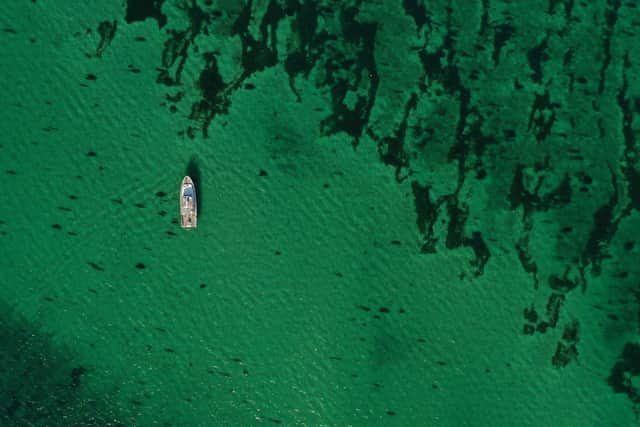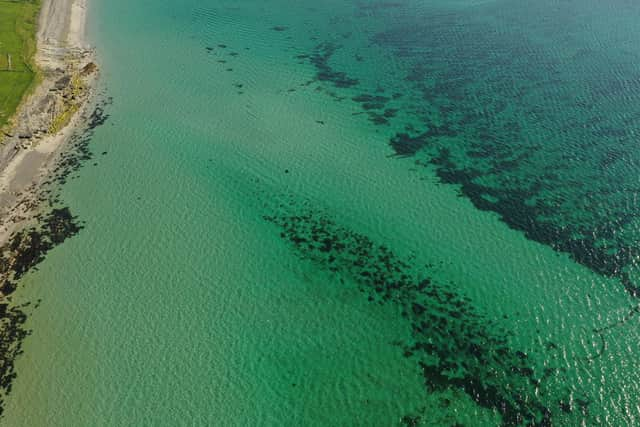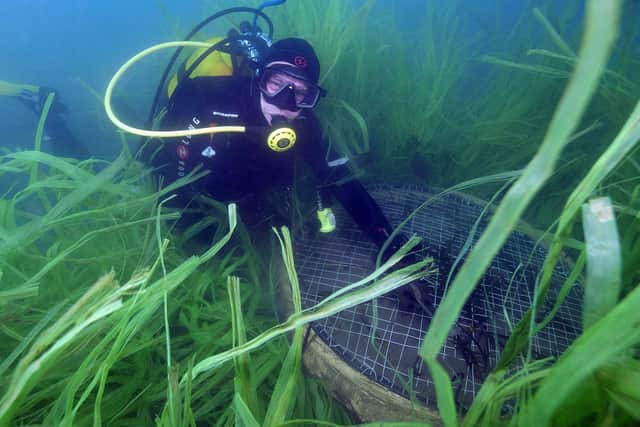Giant underwater meadow – a ‘super-sink’ for climate emissions and nursery ground for marine life – mapped in Orkney
Using drones and robot submarines, the team has confirmed a meadow of seagrass – the ocean's only flowering plant, which provides important nursery grounds for sea creatures and stores climate-warming carbon – stretches across around 30 hectares of seabed in waters south of Papa Westray.
The surveys were carried out as part of Operation Ocean Witness, a joint research mission by Scottish marine charity Open Seas and environmental campaign group Greenpeace UK, which is currently undertaking an investigations cruise around the Scottish coastline.
Advertisement
Hide AdAdvertisement
Hide AdAfter completing an aerial drone survey of the seabed around Vest Ness, the crew deployed an underwater remotely operated vehicle to more closely examine the seagrass bed
The studies were undertaken following an invitation from locals, keen to build knowledge about the condition of their local marine environment.
The crew has welcomed the discovery.
“Seagrass is a carbon super-sequestrator and plays a hugely important role by binding sediments together and stabilising the seabed,” said Phil Taylor, head of policy for Open Seas.


“Not only do they help prevent coastal erosion and mitigating the impacts of climate change, they also provide a valuable nursery habitat for juvenile fish and other marine life, and so are vital for the health of local fisheries and livelihoods.
“Seagrass habitats have experienced serious declines in parts of our coastal waters.
“As a country we can’t protect these habitats unless we know they are there, let alone recover their historical extent.
“We are trying to shine a light on the precious habitats within our seas, and on World Oceans Day we are urging the Scottish Government to take more urgent steps to safeguard and recover habitats like these.”


Rohan Holt, research officer for Open Seas, said: “For aerial surveys it helps if the conditions are just right: low tide, not too much of a glare from the sun.
“It was a phenomenal couple of days.
Advertisement
Hide AdAdvertisement
Hide Ad“When we stitched the images together we were really thrilled to see such a large seagrass bed.
“We estimate it to be a very significant 30 hectares.


“It is great to see local communities working to build knowledge about their local marine environment and we are glad to contribute to the wider scientific seabed survey work in Orkney.”
Seagrass was once a common feature around the coastline and throughout UK waters.
Underwater robots deployed in pioneering study of Scotland's coastal waters to assess fishing impact
The habitat provides essential nursery grounds for a wide array of marine life, including seahorses.
However, much of the country’s seagrass beds are in a degraded condition after suffering widespread declines throughout the 20th century.
Losses continue to be recorded in areas of Scotland – even over the past 10 years, despite the establishment of a Marine Protected Area network.
The Outer Hebrides have lost more than a quarter of their seagrass beds in the last decade.
The Scottish Government committed to take measures to protect seagrass and other seabed habitats regarded as Priority Marine Features throughout the country’s coastal seas.
However, this review has not been completed.
This means many seabed habitats remain vulnerable to damage and further decline, according to marine conservationists.
Comments
Want to join the conversation? Please or to comment on this article.
